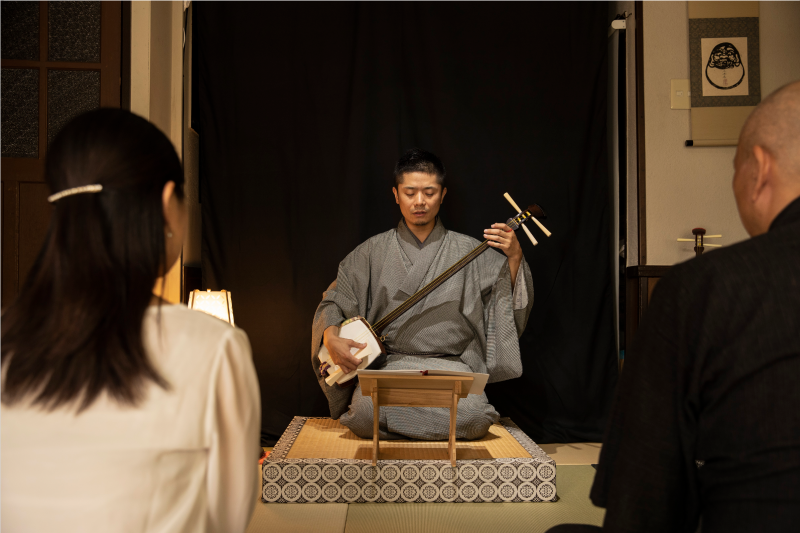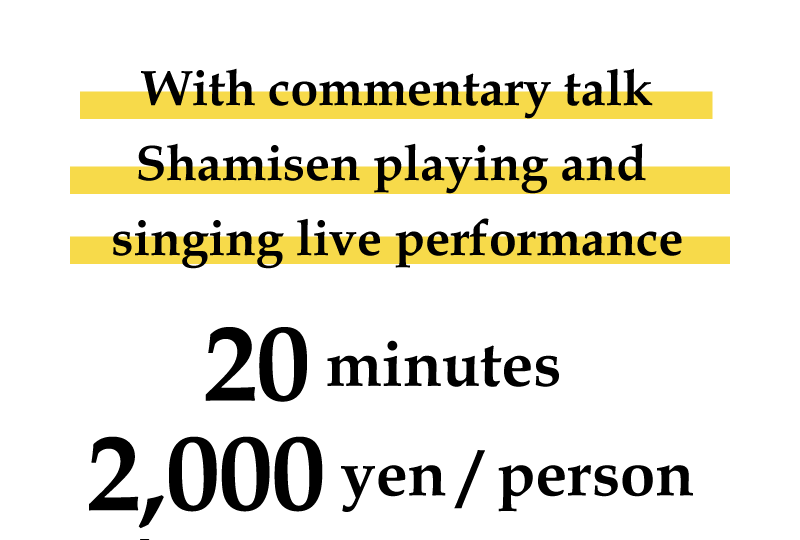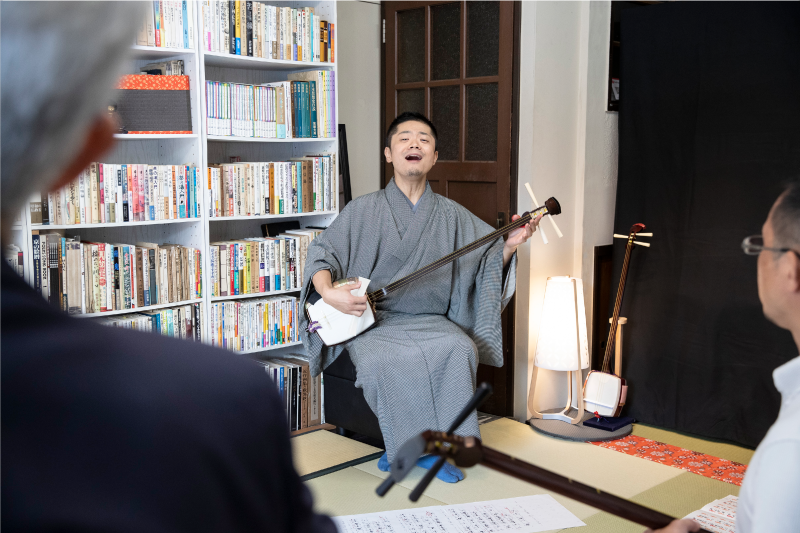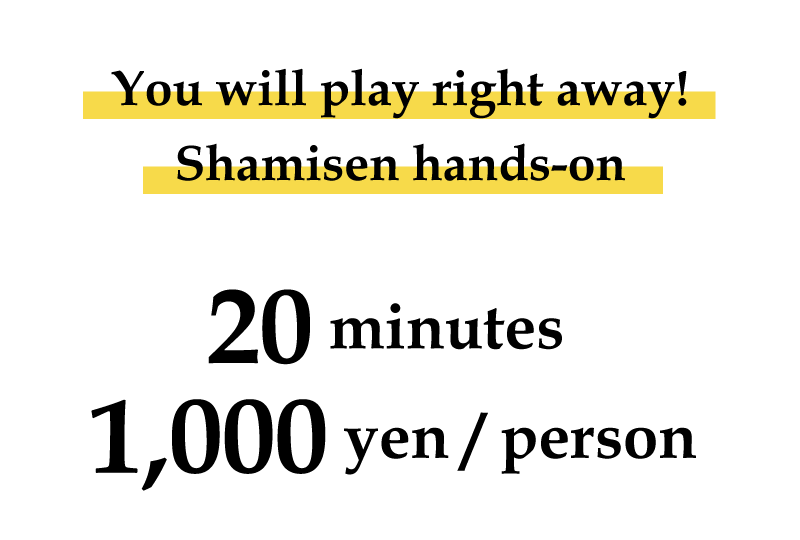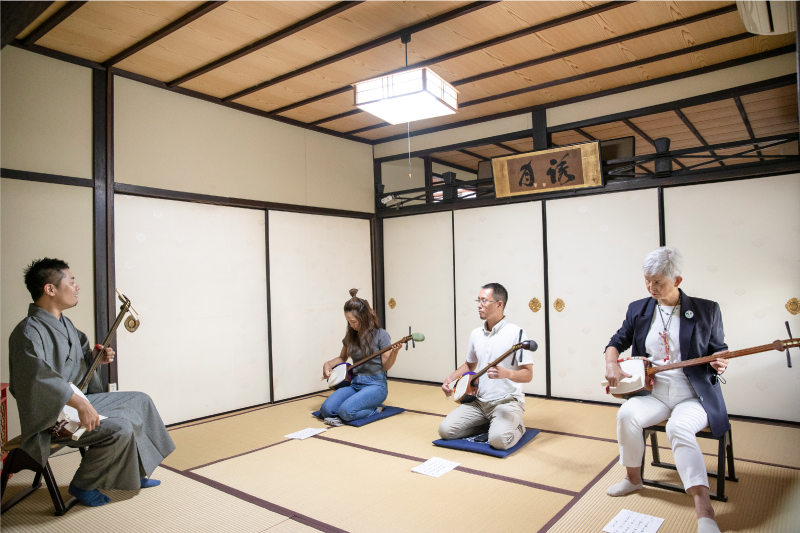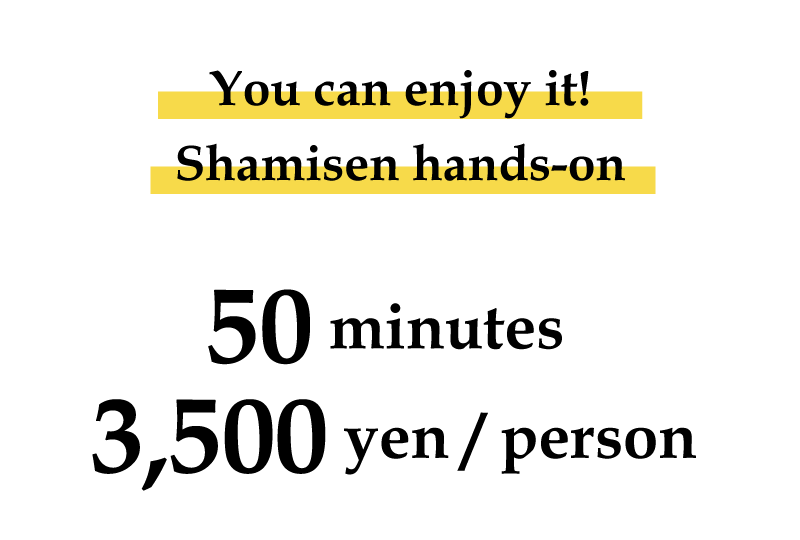
We practice to enrich the sensibility of “Wa”, Japanese feelings, through singing and shamisen.
You can play Wabi shamisen that describes Japanese landscapes and sing Sabi songs that you can enjoy with the emotion of Japanese words.
Imagining the emotions behind the melody and words as you practice together.
You can enrich Japanese feelings through our classes.
Hakumai taught along to the student’s pace, so you can immediately become an attractive shamisen player.
Why don’t you enjoy the exciting shamisen life together?
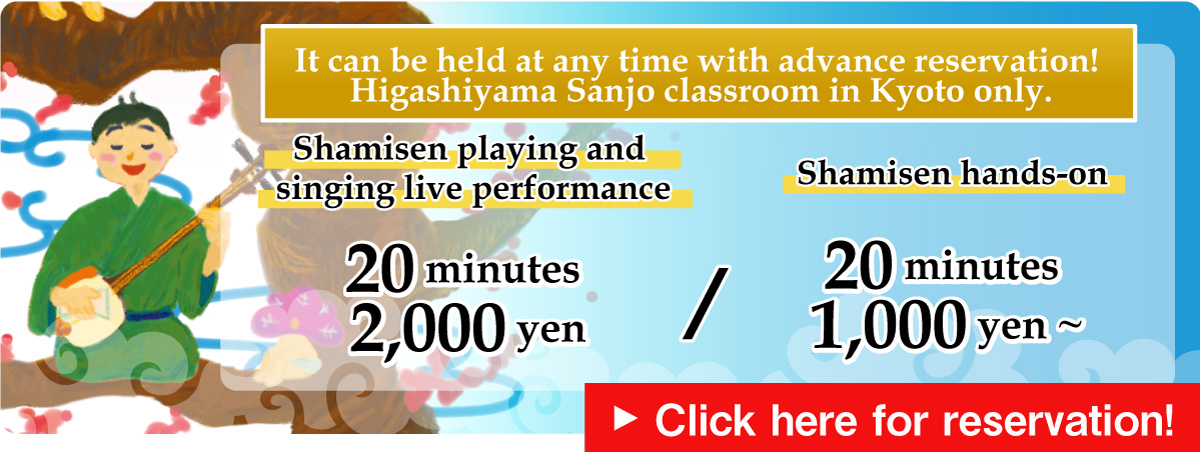

It can be held at any time with advance reservation! Higashiyama Sanjo classroom in Kyoto only.
Hands-on Menu
(You can choose to play only, listen only, or both play and listen.)
Beginners welcome! Anyone can play it right away.
Hakumai devised a playing method that makes it easy and beautiful to play, and arranged songs for beginners. We will practice slowly so don’t worry about it. In the 20-minute course, you will be able to play the traditional Japanese song “Iroha Uta,” and in the 50-minute course, you will be able to play seasonal children’s songs. Hakumai sings the song and plays the main melody, so even those who have never played an instrument can enjoy playing together.
You can feel WABI-SABI.
Even if you have never touched traditional culture, Hakumai will explain it so that you can enjoy the sound of the shamisen. If you know the Japanese culture from the sound, maybe the way you feel about things will change? ! We recommend that you take it before sightseeing in Kyoto!
The more you listen, the more you play, the more you heal.
The shamisen we have prepared has tuned to the 528Hz, which has a relaxed effect and John Lennon focused on. With the classic sound quality, the more you listen to it, the more you play it, the more relaxed you will be. When you finish your practice, you will be refreshed.
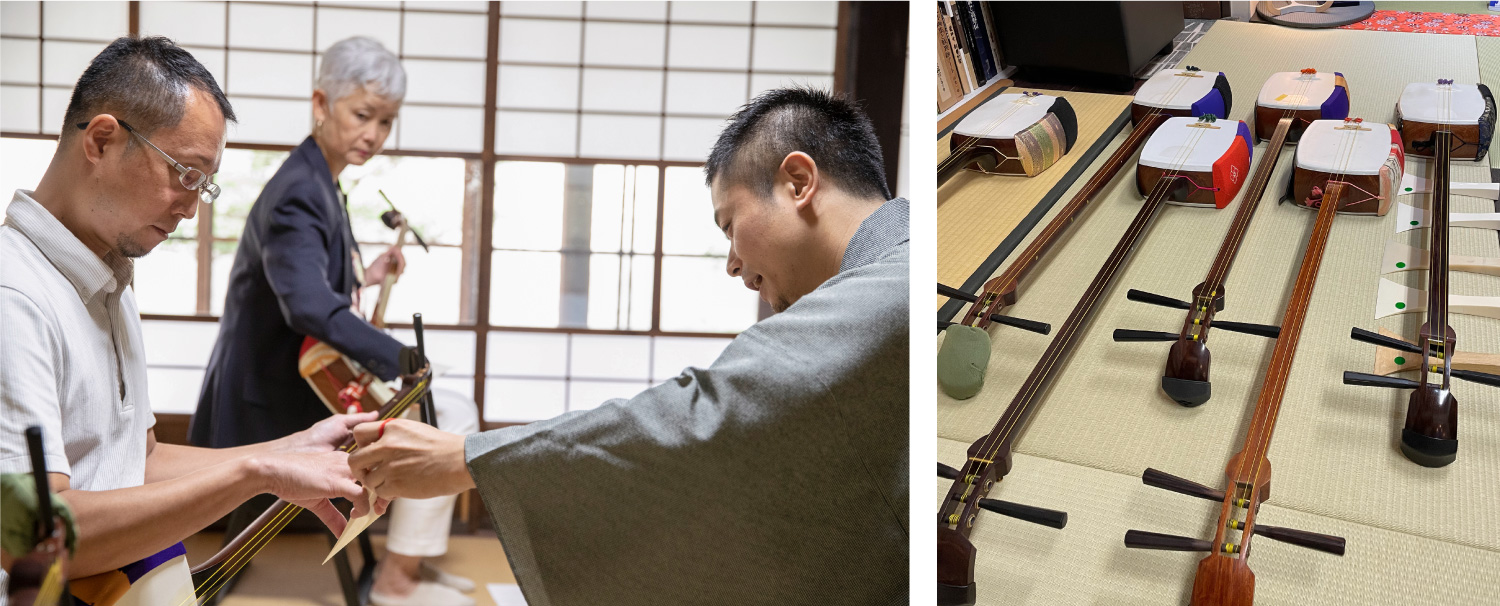
※Shamisen is available for free rental.
Place
Higashiyama Sanjo classroom
- 2-minute walk from Higashiyama Subway Station
- You can park your bicycle in front.
- Coin parking is across the street
110 yen for 60 minutes after 18:00 / 220 yen for 30 minutes during the day
The shamisen hands-on class can be delivered with a live performance.
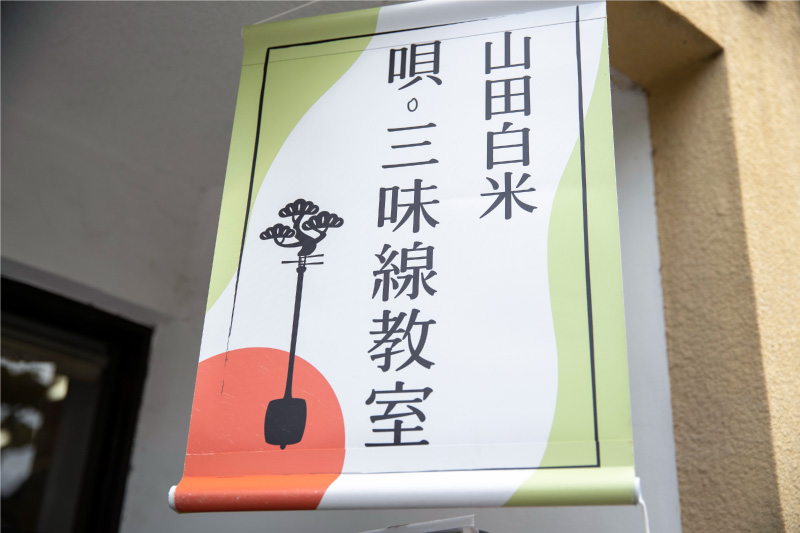
- We can accept from 1 person at a time. Feel free to book.
- Foreign languages are supported. Learners can support you in English, Spanish and Chinese. 5000 yen additional cost per time.
- Please let us know in advance if you would like an additional chair.
- Pants that are not skinny are good.
- If you are wearing a skirt, please bring a towel.
- Minimum age to attend is 6 years old
- There is also a shamisen for children.
*Children in the lower grades of elementary school must be accompanied by an adult. - Payment: cash, credit card, PayPay remittance

We have regular classes. Please check the Japanese pages.

- “I didn’t expect to be able to play shamisen right away!”
- “I’ve never touched shamisen so I was glad to play it.”
- “It was really fun! I enjoyed the lesson and got a sense of accomplishment. You can enjoy shamisen without any pressure.”
-
A.
No problem! Everyone starts from the beginning. -
A.
Hakumai was a tone-deaf before. -
A.
No. And even it’s OK to take only singing lessons.
Application Flow
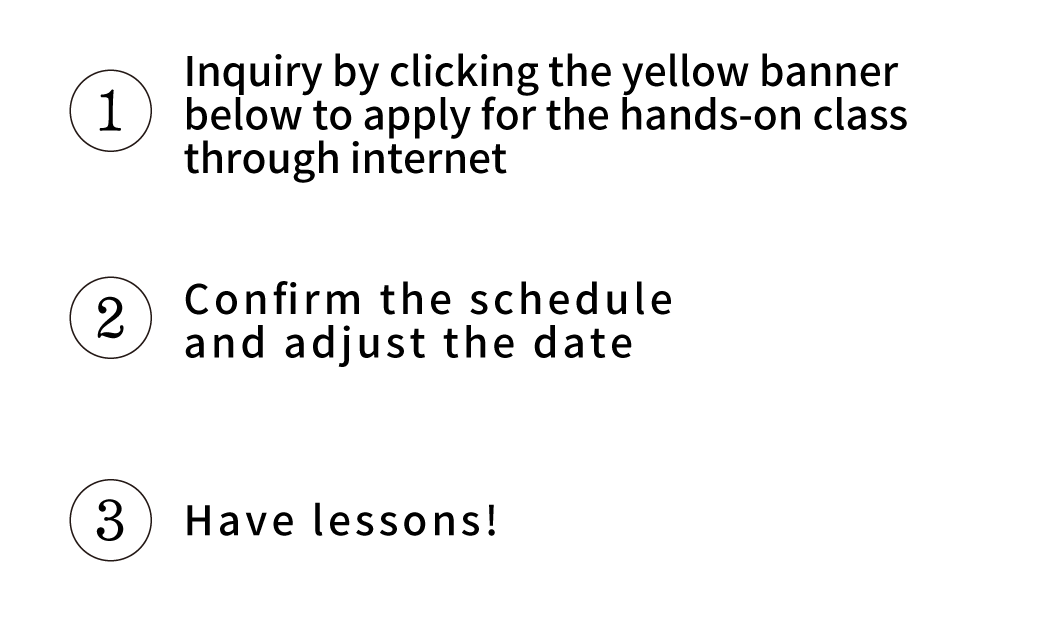
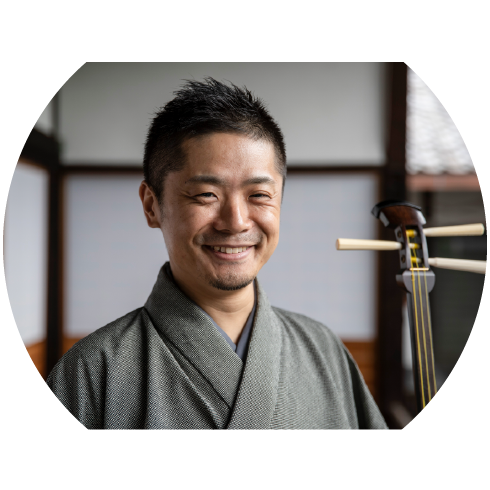
Japanese Sound Experience Designer
Yamada Hakumai
Was born in 1982, Tokyo. Now lives in Kyoto.
In 2002, studied performing arts centered on physical expression at Kyoto Art and Design University and started playing nagauta (BGM for Kabuki, kind of J-POP in the Edo period) in a university circle. From 2007, became a nagauta player and performed at Kabukiza, National Theater, Minamiza, Shochikuza, National Bunraku Theater, Gokagai Kaburenjo, etc.
In 2014, started solo performances as Yamada Hakumai. Now playing, creating, and giving lessons to feel WABI-SABI.
Playing shamisen and singing not only classical nagauta but also Japanese old songs, children’s songs and original songs.
In the singing and shamisen class, providing lessons to enrich the Japanese sensibility.


